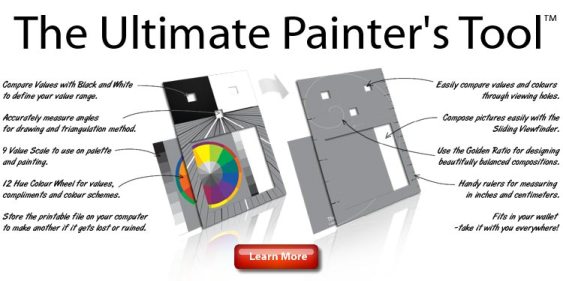How to Reinforce the Illusion of Depth is 2D Paintings
With the availability of resources to explain how to work with perspective, it can still be quite a challenge even for seasoned artists to create a strong illusion of depth in their artworks. Three dimensional depths simply do not exist physically in two dimensional medium such as paintings, sketches and photographs, although with the high capacity of a human brain, you can correctly interpret that the sense of depth in a flat image. In the past, historical records often include landscapes or people depicted without any hint about size or distance, what more with the unrealistic proportions given to the pictures. Over the years, artists have come up with various painting techniques that can, or at least try, to create an impression of distance in 2D art. For instance, a technique that you may have come across and take for granted is the practice of overlapping the objects in the painting. Naturally, an object will appear to be closer to the surface of the canvas if it overlaps with another object. Overlapping objects can be the easiest way to suggest relative distance in a painting. With things that appear to be similar in size and shape, the larger objects will seem closer to the viewer than the smaller objects. For example, the diminishing scale in which a crowd of people are painted will give a hint of who is further away by looking at their relative size. A straight pathway till appear smaller as it approaches the far horizon, until it seemingly vanish altogether. Colors also have a role to play in reinforcing the illusion of depth as seen by the human’s eyes. Deceptive as it might be, the brain is wired to perceive bright colors as being close, and dark, dull colors as being far. Use this to you advantage by adding warm colors like red, yellow and white to objects that are supposed to be closer to the viewer, and at the same time mix some blue paint in the background objects or landscape to make it appear more distant. Usually, objects that are further away are not only darker, but it will also look vague and less detailed. Try to look at mountains or hills and you will notice that while the trees are more detailed up close, it will gradually become smaller and eventually blended together. A problem that you will notice in trying to create a realistic sense of depth in your paintings is the fact that a two dimensional object can only be viewed from 1 angle. When you look at your surroundings, your eyes will capture each object from multiple angles as your head moves ever so slightly, while the mind processes all those images and tell you that the objects are all 3D in nature. With paintings, drawings and such, the subtle movement of your eyes will not feed your brain with the extra information about the depth, because it is nonexistent 2D objects. An exception to this would a hologram that can realistically present 3D objects on a flat surface. Regardless, it is still possible to use the techniques discussed above to include an illusion of depth into your next project. There are many elements you can play with to hone your skills in adding real depth and reinforce the illusion of depth in your painting. Just try experiment with one aspect at a time, master it well and move on to the next one. | |
|


Master the Colours DVD...

|
Although every attempt has been made to make information as accurate as possible, we are not responsible for any errors that may appear.
© Copyright 2015, OilPaintingTechniquesLessons.com. All Rights Reserved.





